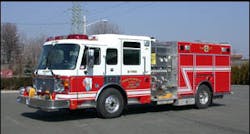The Apparatus Architect: Part 13
In the last installment of the "Apparatus Architect" we discussed some of the concepts regarding equipment layout, hose loads and water tank design. With this article we will complete our series on engine company apparatus by discussing how several fire departments designed their apparatus using some of the concepts that have been presented in the Apparatus Architect series. Keeping in mind that each of these departments have different requirements and functionally operate within different scenarios will assist the reader in understanding the impact that a well designed apparatus will have on the fire department.
The first department we will review is the Kent Volunteer Fire Department, which operates in a semi-rural area of Putnam County, New York covering 32 square miles. This department operates two pumper-tankers, a supply pumper, mini attack pumper, squad and an ambulance from one centrally located station. The department has 40 members and responded to 250 calls during 2001. The department serves an area that is a bedroom community for people who work in New York City and have many large area homes with long set backs from the roadway. There is no public water supply and the fire department relies upon tanker shuttles or LDH hose relays to sustain needed fire flows. Several of the members have fire service experience in other departments, or are career personnel in the FDNY. Their guidance and experience proved invaluable when meeting to discuss new apparatus.
The department is overseen by a five member Board of Fire Commissioners, each of whom indirectly supervise different administrative areas of the department. The department fleet during the mid 1990
